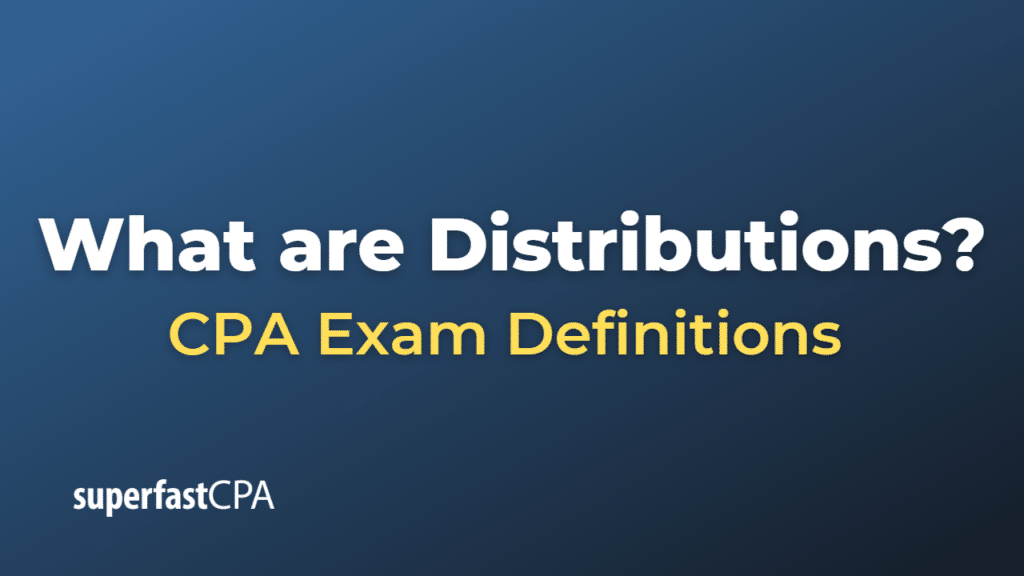Distributions
In business and finance, “distributions” typically refer to the payments made by a corporation to its shareholders out of its earnings or profits. These are often paid out in the form of dividends, which can be in cash, additional shares of stock (stock dividends), or other assets. The purpose of such distributions is to share the corporation’s profits with its owners, the shareholders.
Distributions can also refer to the payments made by mutual funds, exchange-traded funds (ETFs), or other investment funds to their shareholders. These distributions may come from interest, dividends, or capital gains earned by the fund’s portfolio of investments, and they are typically either paid out in cash or reinvested to purchase more shares in the fund.
In addition, in the context of partnerships or limited liability companies (LLCs), distributions refer to the return of capital or sharing of profits among the partners or members. Unlike dividends in corporations, which are usually based on the number of shares owned, distributions in partnerships or LLCs can be determined based on the agreement among the partners or members.
It’s important to note that distributions can have tax implications. For example, in many jurisdictions, corporate dividends are taxable income for the shareholders who receive them. The exact tax treatment can depend on various factors, including the type of distribution, the jurisdiction, and the recipient’s individual tax situation.
Lastly, “distributions” can also refer to the way something is spread out or arranged over a particular area or among a particular group. For example, in statistics, a “probability distribution” describes the likelihood of different outcomes in an experiment.
Example of Distributions
Let’s look at examples in a few different contexts:
- Corporate Distributions: Suppose ABC Corporation has had a profitable year and its board of directors decides to distribute a portion of these profits to the company’s shareholders. They declare a cash dividend of $1.50 per share. This means that for every share a person owns, they will receive $1.50. If an individual owns 1,000 shares, they would receive a cash distribution of $1,500.
- Investment Fund Distributions: Let’s say you invest in XYZ Mutual Fund, which holds a variety of stocks and bonds. Over the course of the year, these investments earn interest, dividends, and capital gains. Periodically (such as quarterly or annually), XYZ Mutual Fund makes a distribution to its shareholders of these earnings. Depending on the mutual fund’s policy and the preferences you’ve set for your account, these distributions might be paid out to you in cash, or they might be automatically reinvested to buy more shares in the fund.
- LLC or Partnership Distributions: Consider you’re a member in a limited liability company (LLC) along with two other partners. The LLC agreement states that profits will be distributed to members based on their initial capital contributions. If the LLC makes a profit and decides to distribute $30,000 among the members, and you initially contributed 50% of the total capital, you would receive a distribution of $15,000.
In all these scenarios, it’s important to remember that distributions usually have tax implications, and the specifics can depend on various factors such as local laws and individual tax situations.













